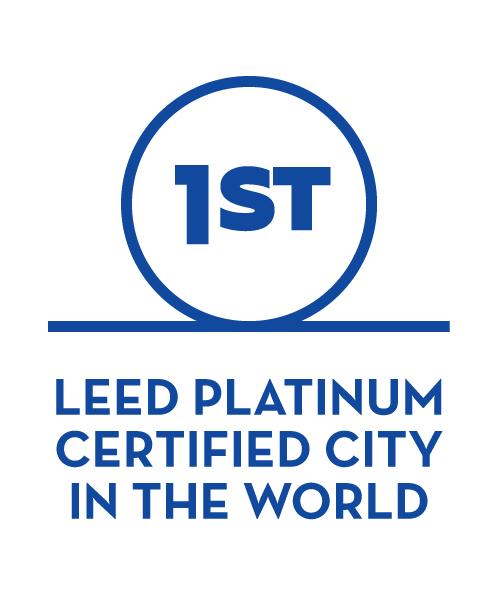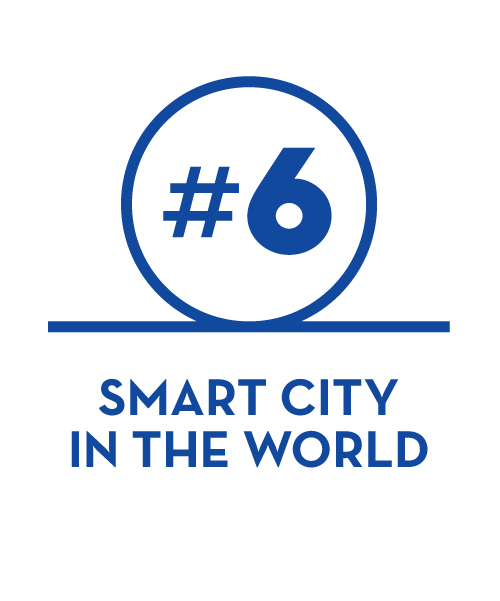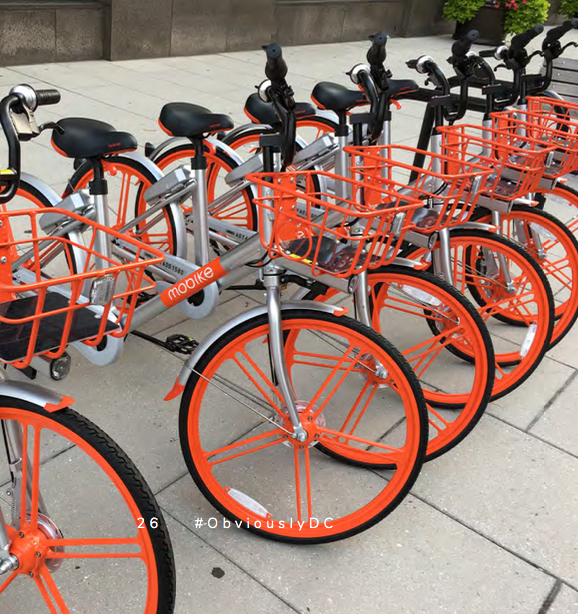

Access DC's world-class infrastructure and resilience leadership
Washington, DC features the infrastructure of a major, cosmopolitan, interconnected urban city. As one of the most connected cities in the globe, DC is a leader in resilience, smart cities, and data infrastructure.
A robust multi-modal transportation network
Among large US cities, few offer as many transportation options as DC. More than a third of DC households are car-free, the second highest proportion of any major US city. A quarter of DC residents choose alternate methods of transportation and go by foot, train, bike, or bus.
Transit Options
Metrorail provides safe, clean, and reliable transit service for more than 600,000 customers a day throughout the Washington, DC area. The system is the second busiest in the United States, serving 91 stations in Virginia, Maryland, and the District of Columbia. The Metrorail system has six color-coded rail lines: Red, Orange, Silver, Blue, Yellow, and Green. The layout of the system makes it possible to travel between any two stations with no more than a single transfer.
Metrobus provides safe, clean, and reliable transit service for more than 600,000 customers a day throughout the Washington, DC area. The system is the second busiest in the United States, serving 91 stations in Virginia, Maryland, and the District of Columbia.
Local Bus Systems extend public transportation into more neighborhoods - both in DC and beyond - and Commuter Buses take commuters inside and outside of the capital beltway each day.
Commuter Rail offers long-haul services, carrying passengers as many as 50 miles into and out of the DC area on weekdays. The combined daily ridership approaches 50,000 passengers, with 16,000 using the Virginia Railway Express (VRE),
MetroAccess is a shared-ride, door-to-door, paratransit service for people who cannot independently use the accessible bus and/or rail system due to a disability.



Bike ridership in Washington, DC more than doubled between 2008 and 2014.
With up to 76 daily flights to New York, nine daily direct flights to Seattle, and 20 daily direct flights to the Bay Area, service to and from the region, Washington, DC delivers the level of service necessary to support a transient global capital city.
DC area airports also serve as international hubs with 88 daily international flights to 59 unique international locations on nonstop or one-stop same-plane flights.
Sustainability and resilience
Sustainable buildings, protection of natural resources, and accessibility to alternative transportation including more than 140 miles of bike lanes and paths, are the forefront of Washington, DC’s dedication to building an environmentally conscious city. Setting the stage for a future of all new net-zero energy buildings, DC has the most ENERGY STAR certified buildings, a record 790 in the metro area, and became the world’s first LEED platinum city in 2017.
Connectivity infrastructure like nowhere else
Fiber Footprints
The Office of the Chief Technology Officer (OCTO) manages an incredibly successful municipal network. More than 700 miles of fiber powers the city, providing connectivity to government buildings, community anchor institutions, and free public wifi to District residents. Through its operational experience running a municipal network and extensive community engagement (Connect.DC), the District has provided technical city resources and a commitment to sustainability and community development.
DC operates one of the most advanced government owned and managed networks in the nation. The expansive fiber footprint spans the entire city, including 650 city-owned or leased buildings, with a one-of-a-kind 100 gigabit-per-second optical backbone equating to almost 10 terabits-per-second of aggregate capacity.
Cellular Coverage
Cellular coverage by the four major providers, Verizon, AT&T, Sprint, and T-Mobile, have close to ubiquitous outdoor coverage in the District and indoor coverage in the areas of interest.
DC operates a one-of-a-kind 100 gigabits-per-second fiber network throughout the city.
DC is a leader in mobility and smart city innovation
As the center for transportation innovation, Washington, DC continues to be a leader in advanced mobility.
DC was the first city Zipcar founders chose to expand outside of its home city. In 2014, executives at app-based ride-booking services hailed Washington as a model city after the DC Council approved some of the most industry friendly rules of any city.
DC is ready for autonomous vehicles
The DC government is a leader in thinking through autonomous vehicle policy and implementation and has favorable conditions for autonomous vehicles.











